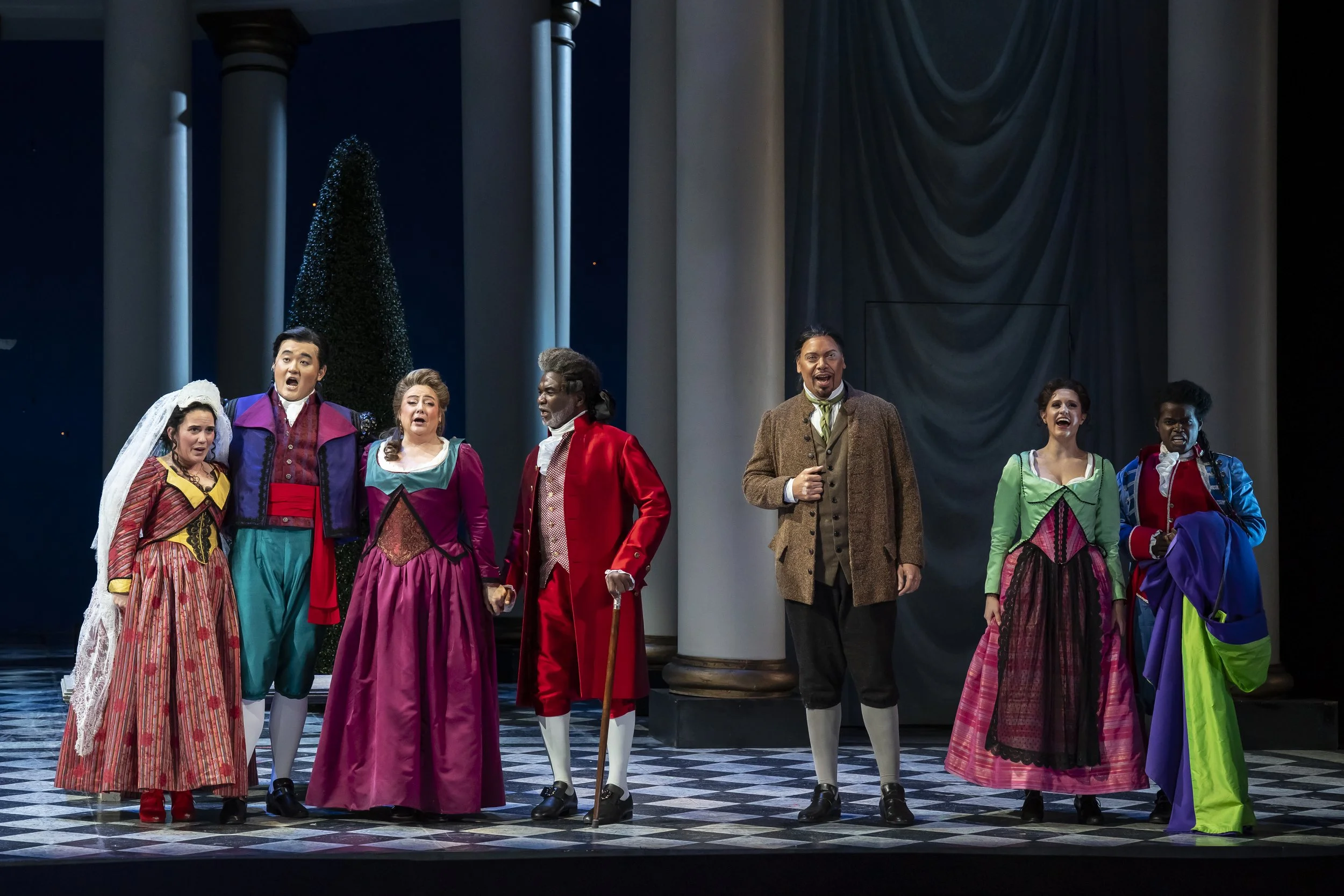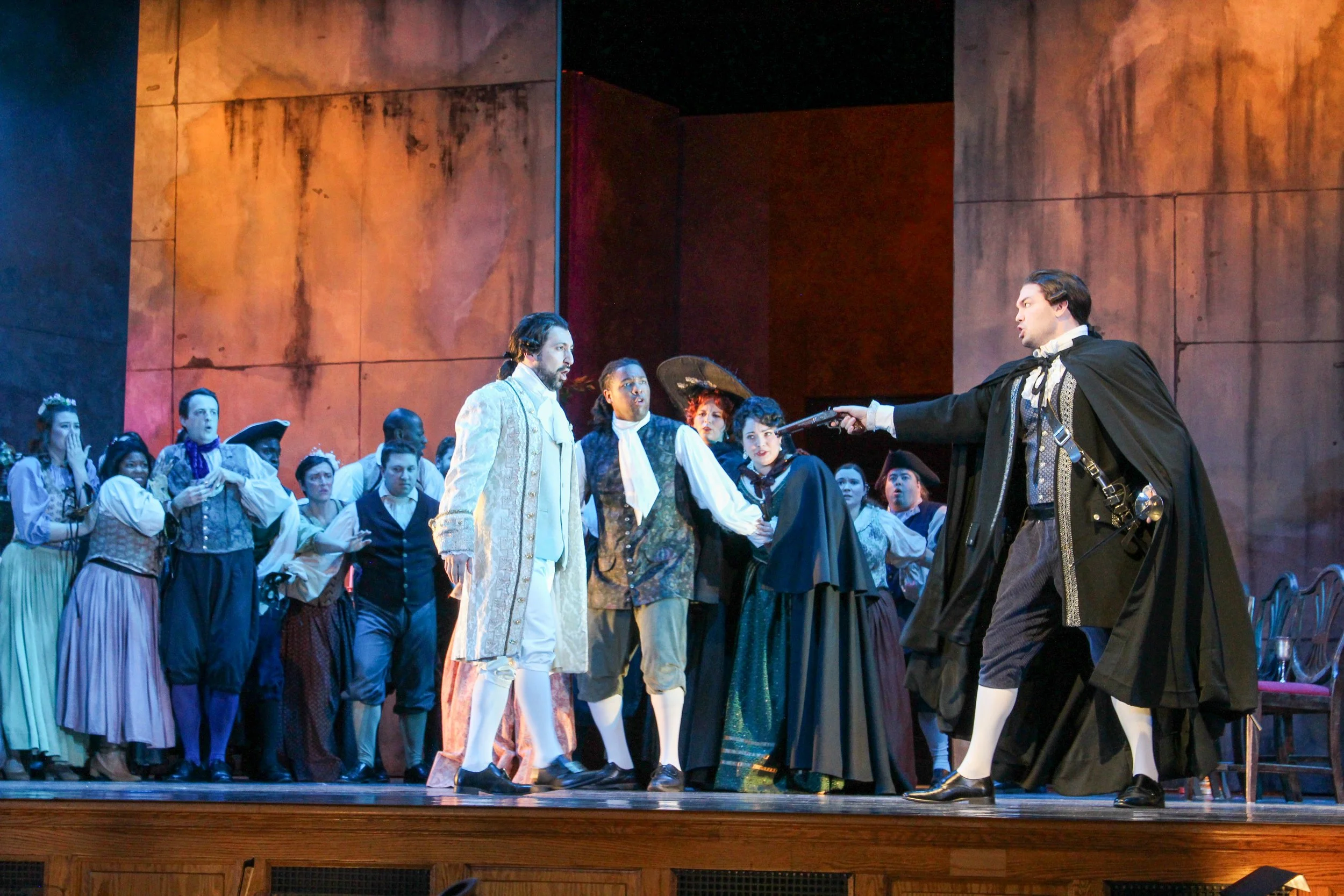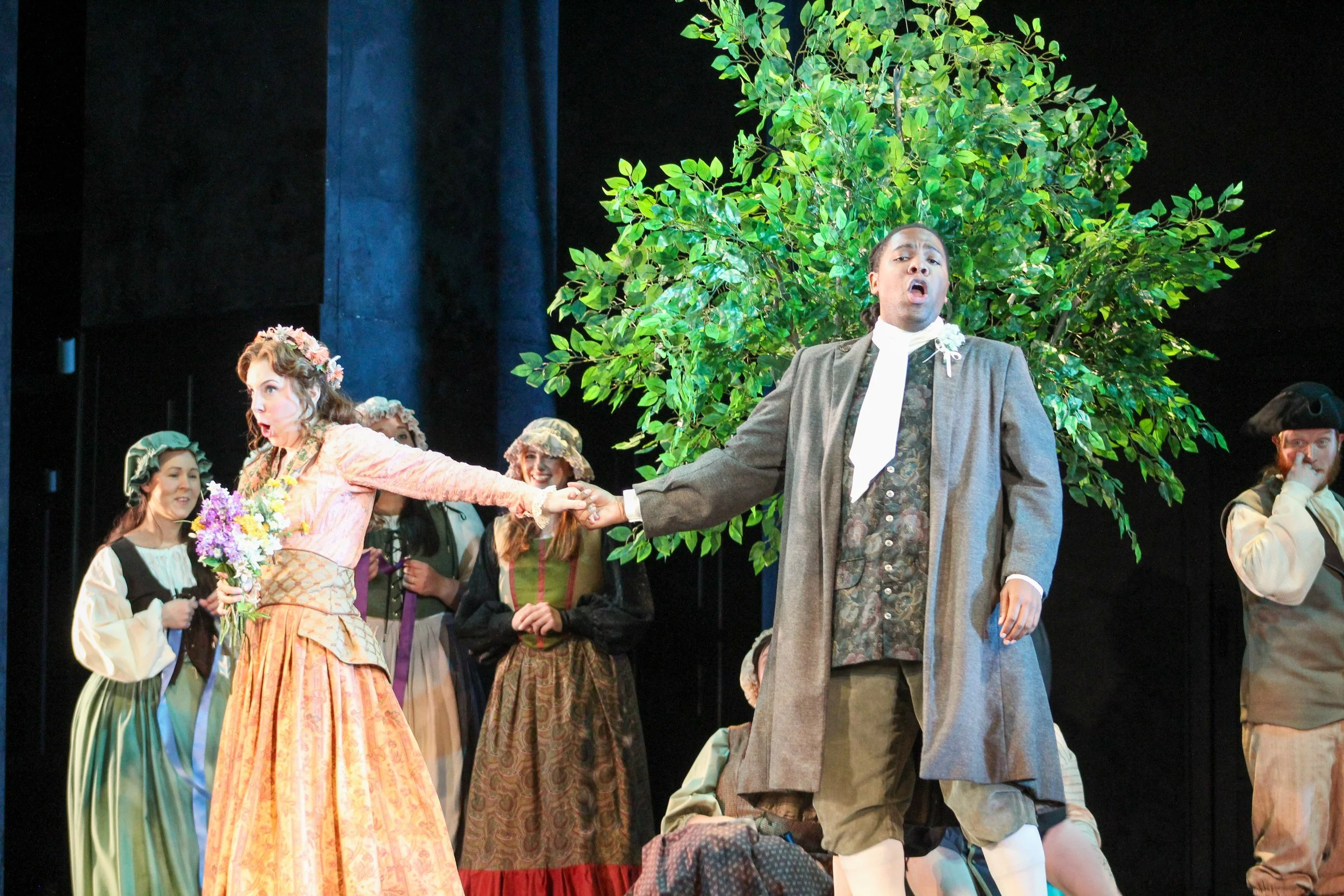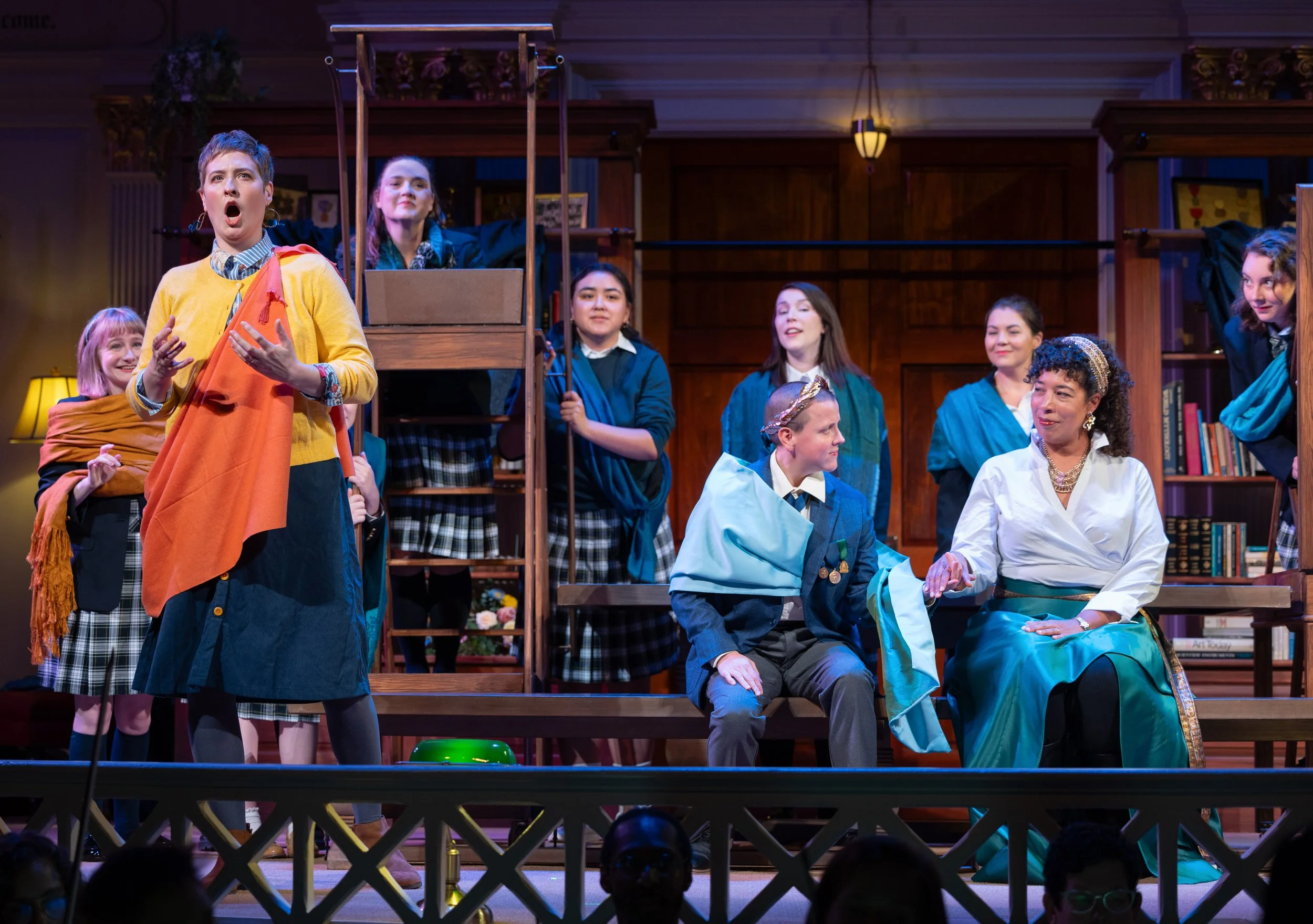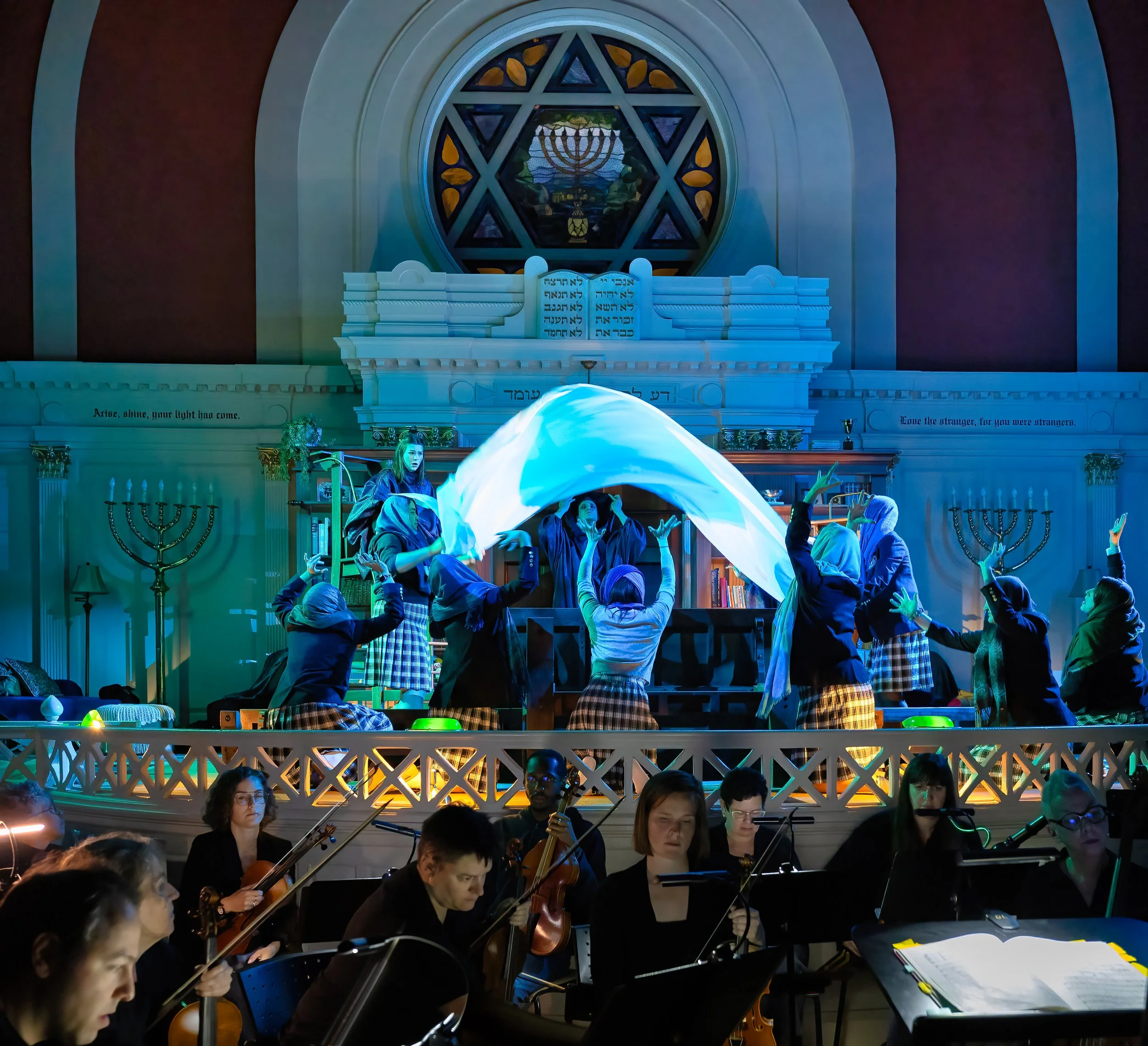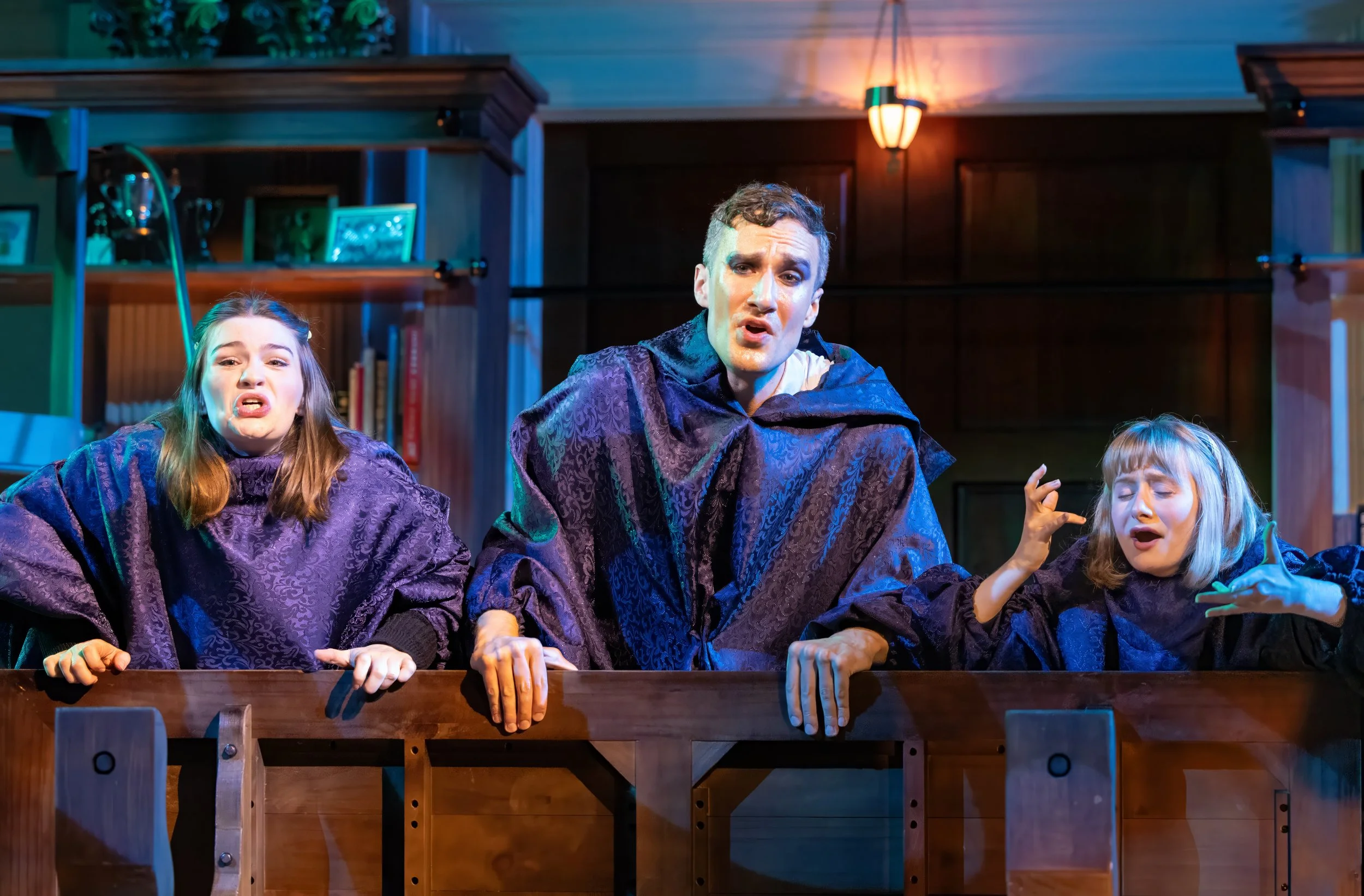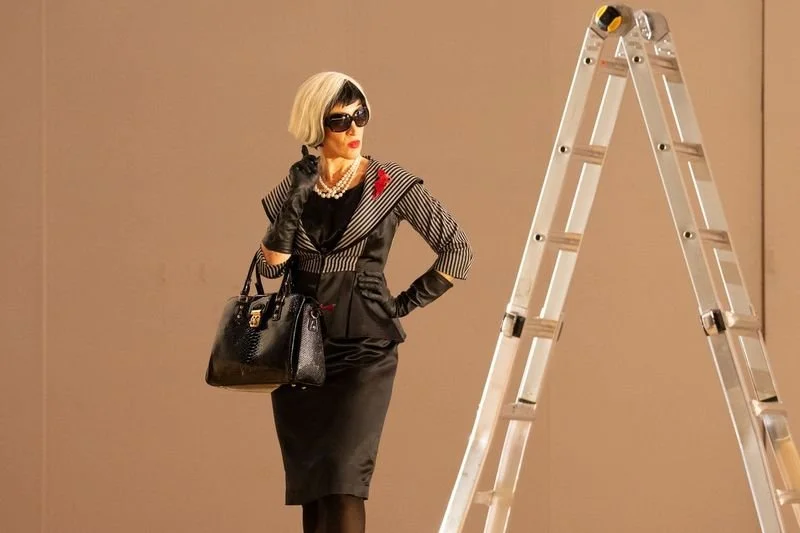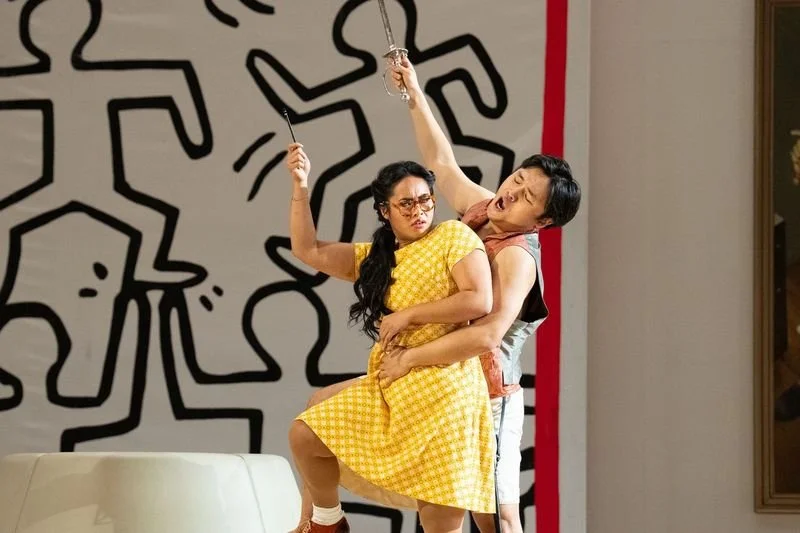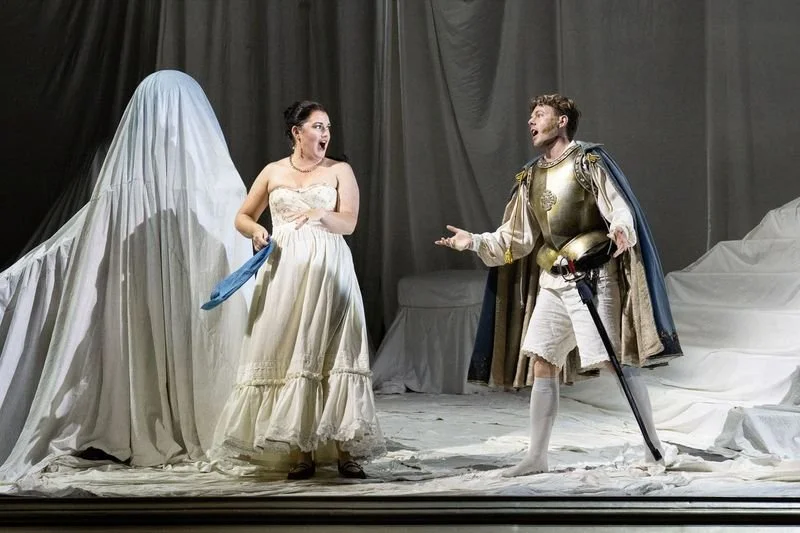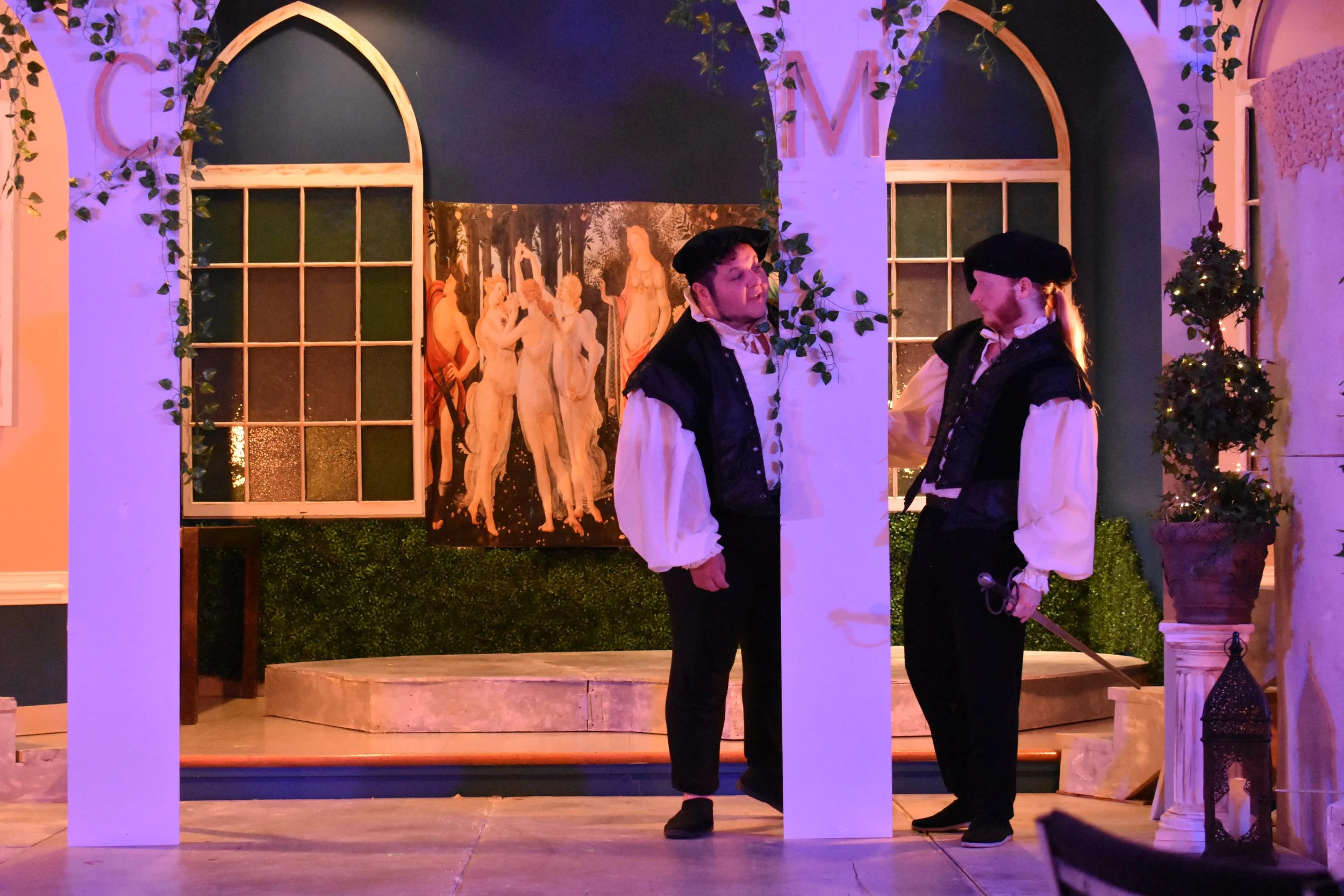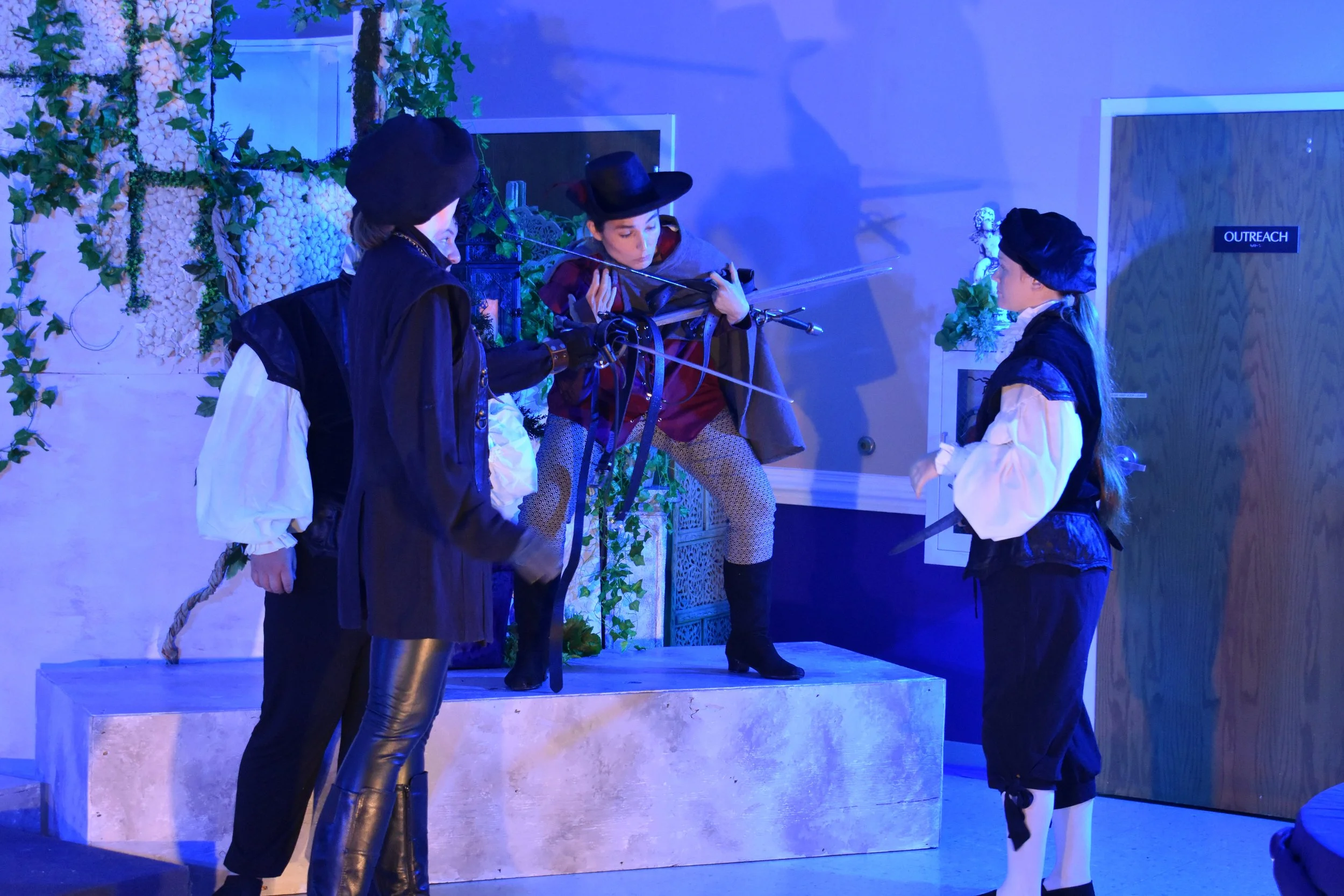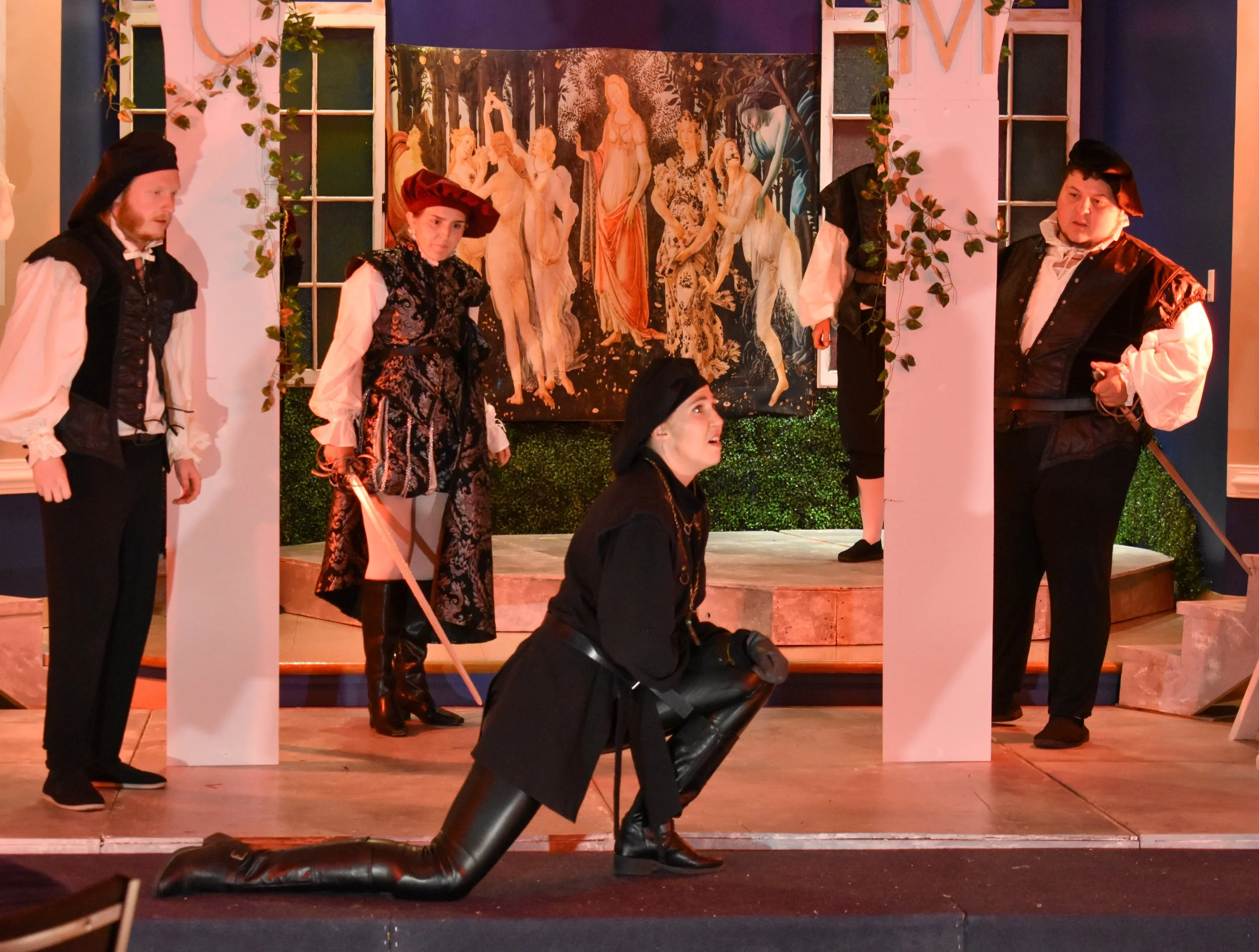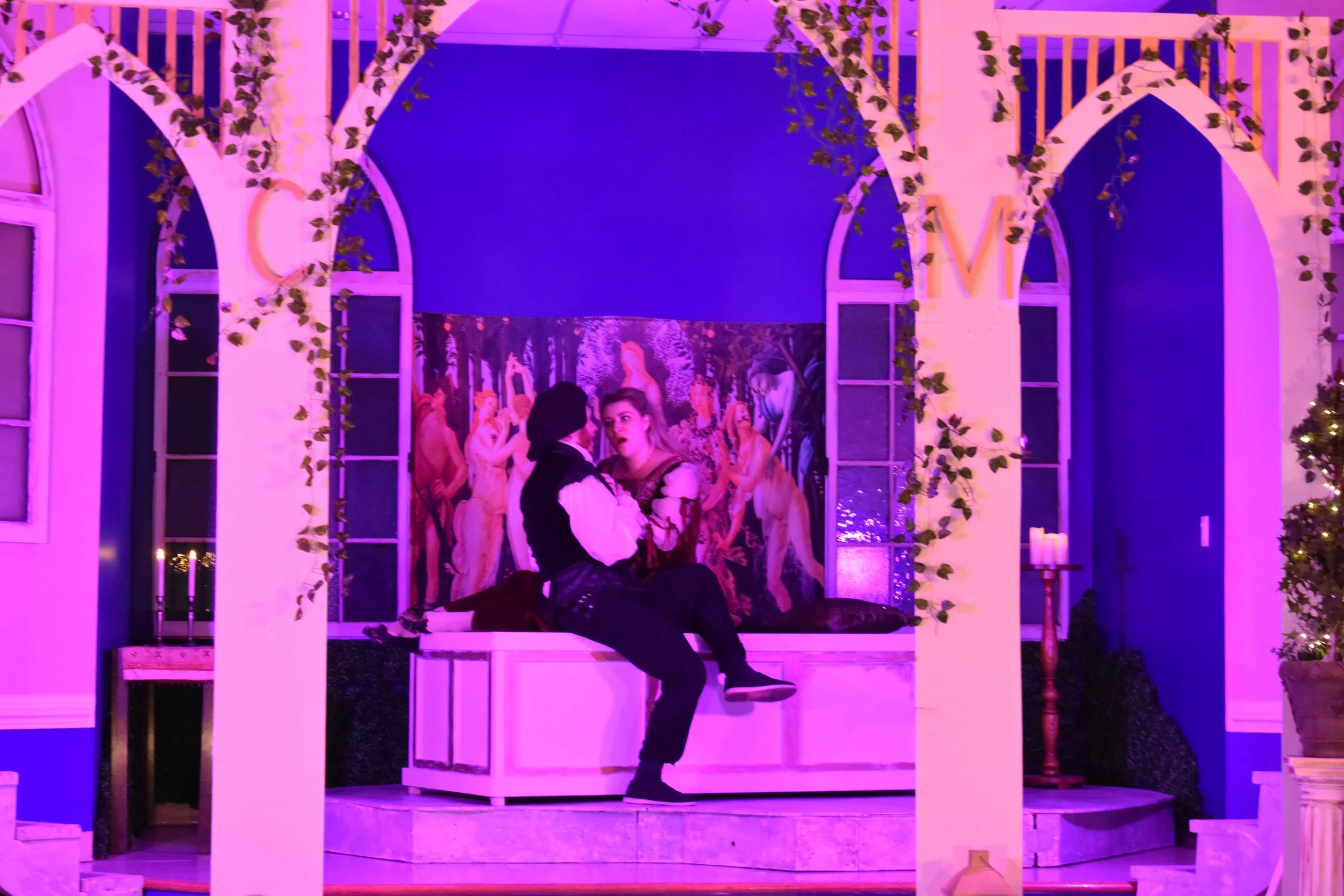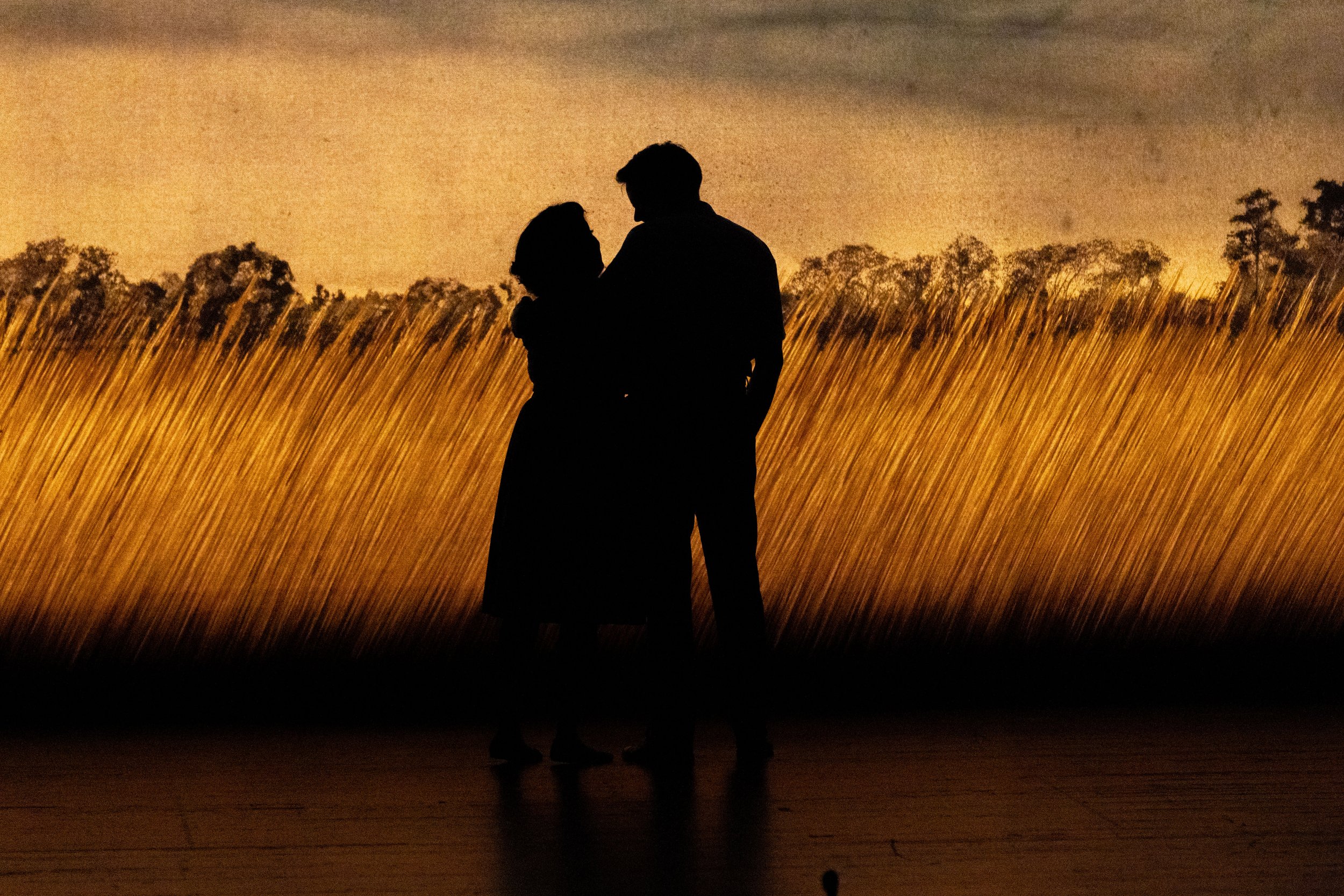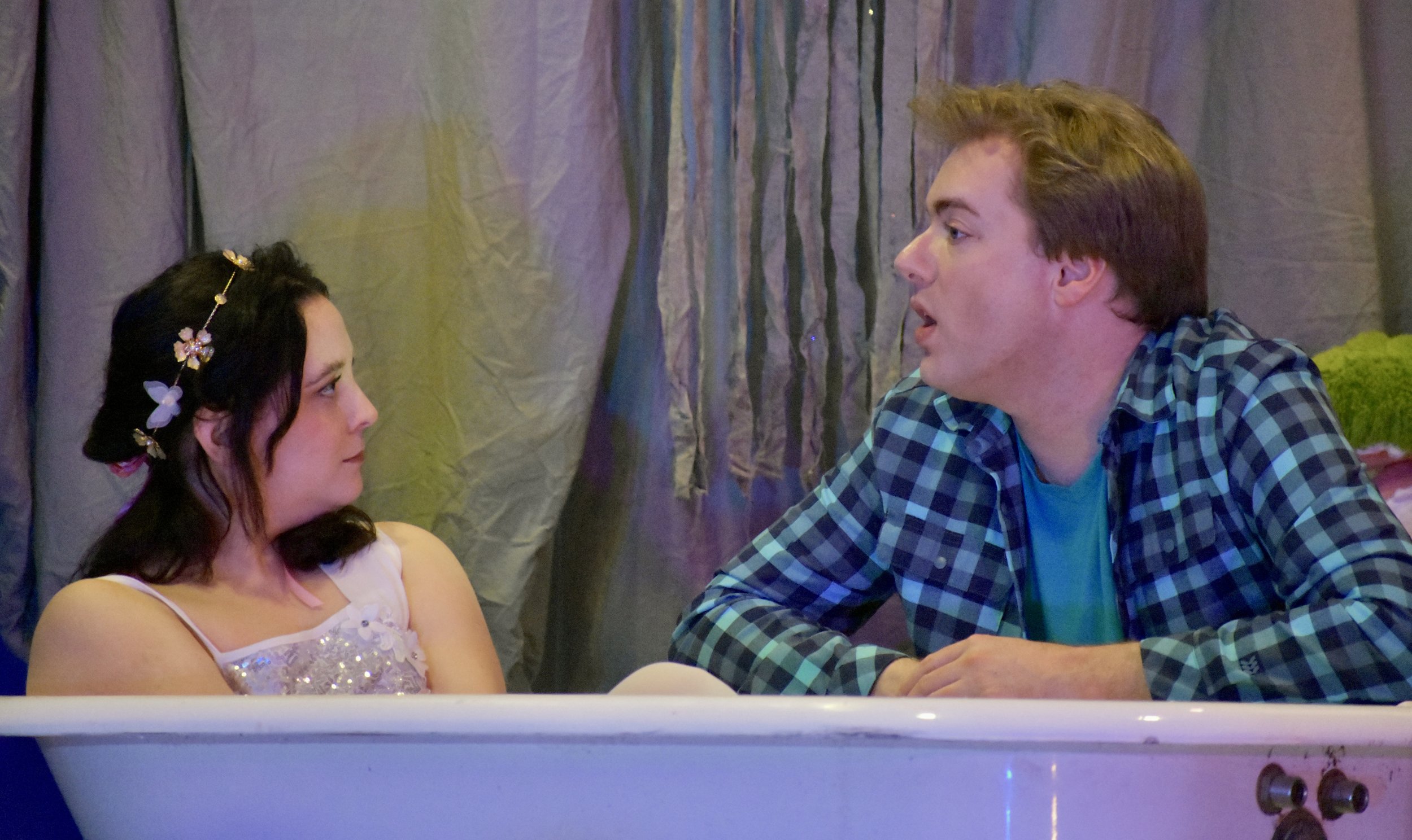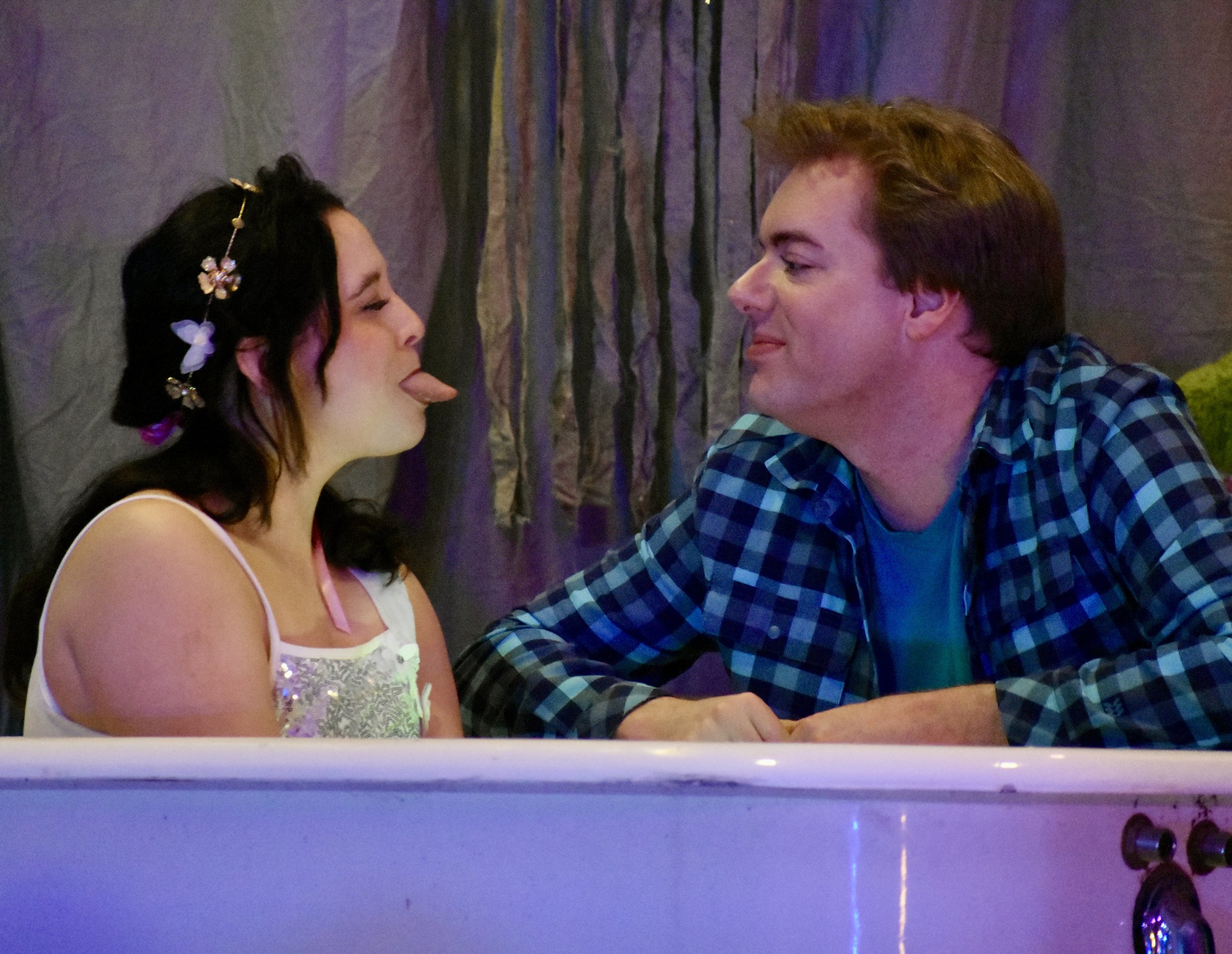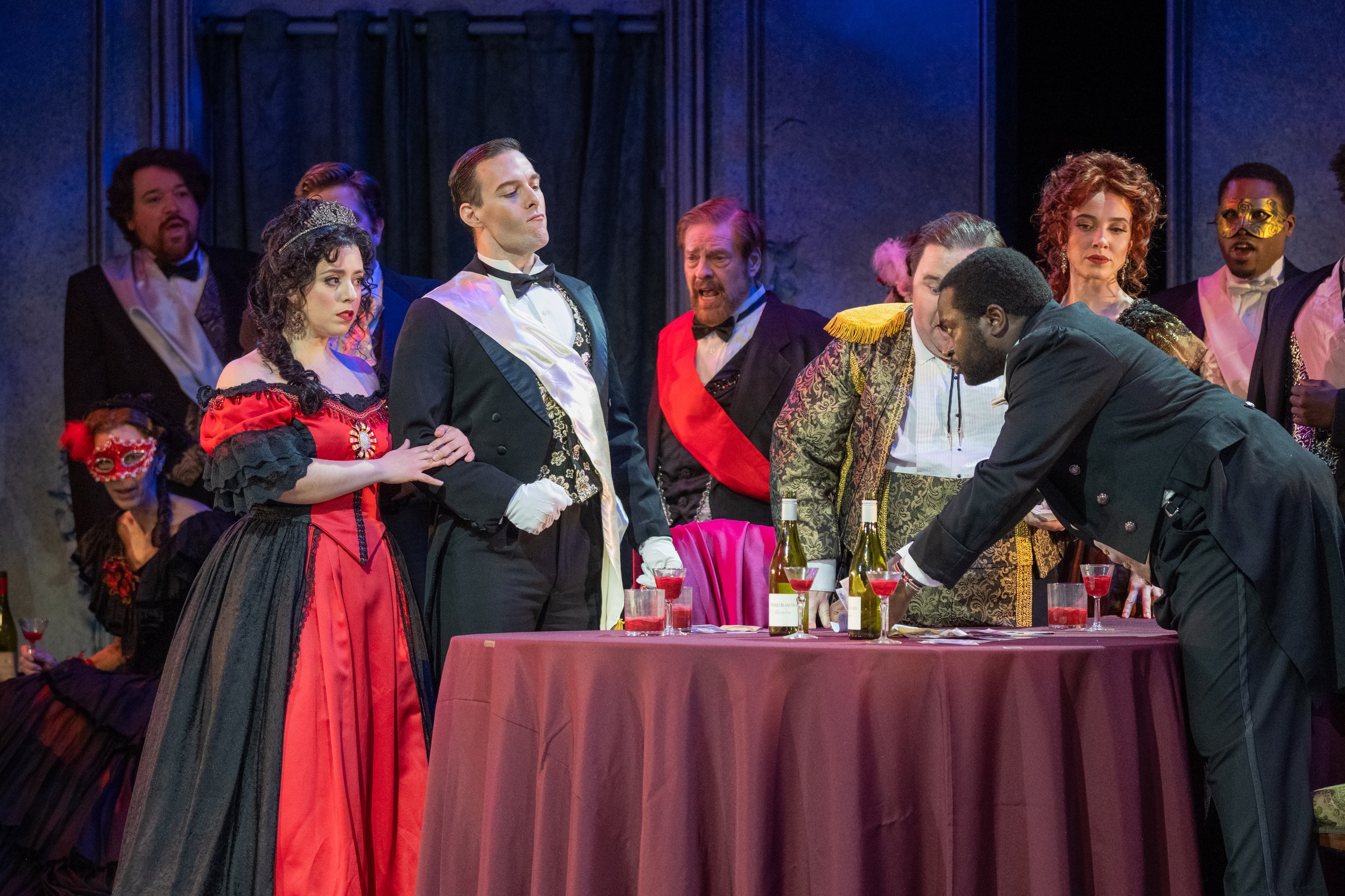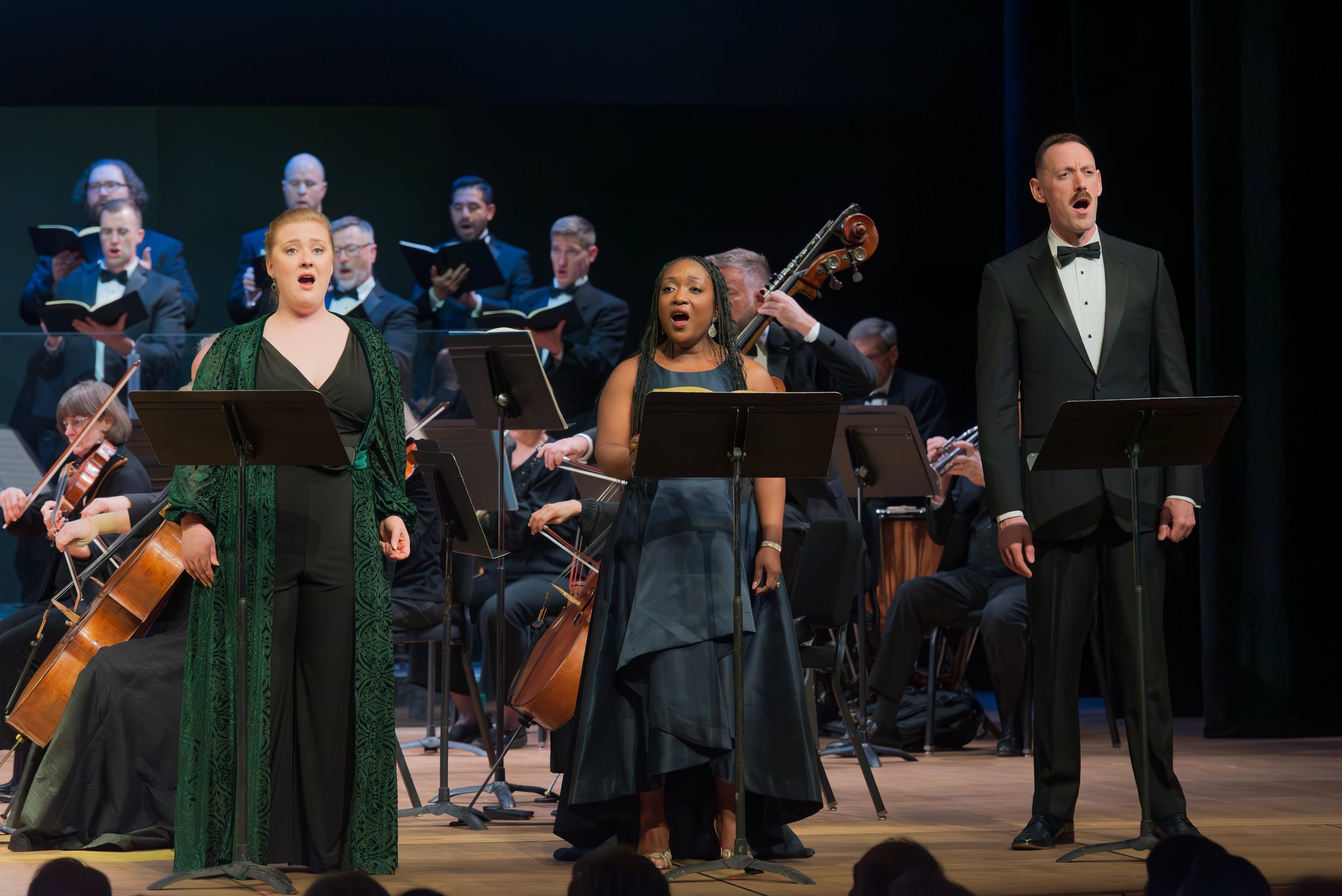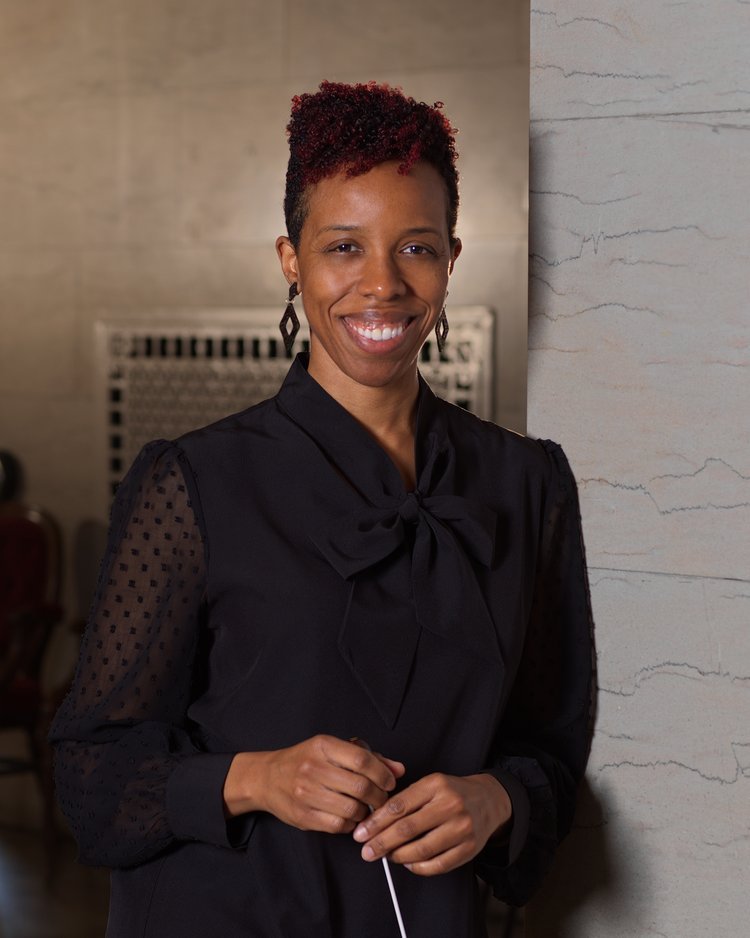An all-star cast, a new music director, and a returning stage director gave us Wolfgang Amadeus Mozart and librettist Lorenzo Da Ponte’s The Marriage of Figaro (1786, Le Nozze di Figaro) in full measure. Washington National Opera’s production, running through November 22, provides everything you might want from classic opera buffa. The expression on my face changed with the drama on the stage, but the smile in my heart began with the first notes of the overture and lasted through the standing ovation at the end. Entertaining, rewarding, enriching, this one checked all the boxes, classic opera at its best, art that entertains and embeds itself in your heart! Kudos to WNO’s Artistic Director Francesco Zambello, General Director Timothy O’Leary, and everyone involved for bringing this treasure to DC in such fine fashion.
The betrothed couple, Susanna (Joélle Harvey) and Figaro (Le Bu). Photo by Scott Suchman; courtesy of Washington National Opera.
Mozart and Da Ponte collaborated to produce three operas, all still popular today: in addition to Figaro, Don Giovanni (1787), and Così fan tutte (1789). As was the case with all their collaborations, there is more afoot than comedy; the social change rippling through society at that time was also a target of the operas. The ruling class at the time didn’t take well to such themes in performance art, and such works faced roadblocks in getting to the stage. In the pre-opera talk by Ken Weiss, Principal Music Coach of the Cafritz Young Artist Program, he pointed out that by making Spain its setting, instead of Vienna where it was first performed, and modifying Beaumarchais language from the play (The Mad Day, or The Marriage of Figaro) that the opera is based on, allowed Figaro to get past the censors and the emperor. There is another famous opera(s) based on a Beaumarchais play, The Barber of Seville, containing many of the same characters at an earlier time.
Cherubino (John Holiday) and Countess Almaviva (Rosa Feola) share a moment. Photo by Scott Suchman; courtesy of Washington National Opera.
In Figaro, the wooing of Rosina by Count Almaviva in The Barber of Seville is now past, and the Count has been messing around; Countess Rosina is distraught. Count Almaviva now desires to bed Susanna, his wife’s servant, supposedly justified by droit du seigneur (right of the lord). Figaro, servant of the Count and Susanna’s husband to be, joins forces with his betrothed, the Countess, and a love-struck page, Cherubino, to outwit the Count. Dr. Bartolo, whom had tried to keep Rosina for himself in the earlier chapter, and Marcellina, his housekeeper, are part of a sub-plot, with Don Basilio, Don Curzio, Barbarina, and Antonio all making appearances. Plots and subplots are begun and go astray, and hilarious surprises abound in classical opera buffa style, which is to say, in classical commedia dell’arte style. Regardless, it was an excellent plot device for Beaumarchais to make the point quite clearly that nobility had more control over their subjects, even their bodies, than should be granted; this was a controversy roiling aristocracies of the continent at that time. It allows Da Ponte and Mozart to bring us to the conclusion that both rulers and subjects are flawed human beings and that love conquers all, with the only path forward being to ask for and give forgiveness and move on. Due to the exceptional likability of the music and the themes of human susceptibility to transgression, the recurring need for forgiveness, and the righting power of love, we continue to embrace The Marriage of Figaro.
l to r: Count Almaviva (Will Liverman), plots with Marcellina (Elizabeth Bishop), Don Basilio (Rodell Rosel), and Dr. Bartolo (Sir Williard White). Photo by Scott Suchman; courtesy of Washington National Opera.
Did I mention the all-star cast? Figaro has four leading roles, seven substantial supporting roles, and a chorus. The word for this cast overall is stellar. Lyric soprano Joélle Harvey proved to be a perfect Susanna, in both singing and acting. She has a beautiful voice, sings expertly, and is a charmer on stage. This was her first appearance with WNO; she was a late addition to the cast when the previously scheduled soprano had to withdraw. Ms. Harvey has previously garnered high praise for her Susanna at the Royal Opera Covent Garden and for her Pamina at the Met Opera. The role of the Countess was sung to perfection by international superstar soprano Rosa Feola. She sang with incredible feeling and beauty in a role that is the emotional center of the opera. Her “Porgi, amor” mourning her husband’s infidelity was touching. She and Ms. Harvey sang a drop-dead beautiful “Sull’aria”, an all time favorite of mine. Ms. Feola, who has starred at both the Met Opera and La Scala, appeared as Juliette for WNO in 2023. Bass-baritone Le Bu, who is relatively new to leading roles in staged opera, impressed from his first appearance on stage with a strong, commanding voice; we appear to have a new major talent on our hands. He gave us a more reactive than reflective Figaro but performed well overall. He is in the Lindemann Young Artist Development Program at the Metropolitan Opera. In 2022, he won the Met Opera Laffont Competition and in 2024, won the prestigious worldwide Operalia competition. The Count was played by baritone Will Liverman, well known to opera fans in DC, Philadelphia, and NYC. He sang beautifully, giving us a determined, angry Count when foiled, then displayed a more appealing range of emotions in the second half of the opera.
Susanna (Joélle Harvey) emerges as the surprise noise maker in the closet while the Count (Will Liverman) and Countess (Rosa Feola) are poised for action. Photo by Scott Suchman; courtesy of Washington National Opera.
A surprise casting by Washington National Opera for the role of the young, hormone-driven Cherubino was one of the reasons I was looking forward to attending this performance. Mozart wrote this part for a mezzo-soprano in a pants role, a woman playing a man’s role. Instead, WNO cast highly regarded countertenor John Holiday, who has the tessitura to sing the role. He has a beautiful voice and sings with precision. Mr. Holiday was funny, effective, and consistently excellent in the part, and I enjoyed him as adding a novel element, though I still prefer it as a pants role, at least if it is not Mr. Holiday. The remaining performers in supporting roles also have impressive biographies. Bass-baritone Sir Williard White and mezzo-soprano Elizabeth Bishop not only sang well but were a rather charming pair in addition to being amusing. Tenor Rodell Rosel as teacher Don Basilio was a genuine hoot as the focal point of humor. Soprano Lauren Carroll, a Cafritz Young Artist, as Barbarina, tenor Hakeem Henderson, a Cafritz Young Artist, as Don Curzio, and bass Kevin Thompson as Antonio, all contributed substantially to the performance. Mozart is a master at composing ensemble singing. Figaro at times includes not only duets and trios but ensembles of 4 to 7 singers. This cast, with their tight singing, performed the ensembles in a highly enjoyable fashion.
Susanna (Joélle Harvey) and Countess Almaviva (Rosa Feola) prepare Cherubino (John Holiday) to appear as a woman. Photo by Scott Suchman; courtesy of Washington National Opera.
This performance was Robert Spano’s first as confirmed Music Director for WNO, though not his first as conductor. Under his direction, the Washington National Opera performed Mozart’s score beautifully. In terms of volume, coordination with the singers, and emphasis, I enjoyed every minute and never felt anything was askew. I enjoyed the WNO chorus led by Steven Gathman which mainly stayed in the background for this performance.
Director Peter Kazaras also directed this production staged by WNO in 2016. The set, at times, was impressive, with columns and lighting; kudos to set designer Benoit Dugardyn and lighting designer A. J. Guban. The colorful period costumes by Myung Hee Cho were delightful, adding to the production’s charm. The flow of the four-act opera, changing sets with the action, supposedly completed on just one day, was well done by Director Kazaras. The were many small touches that conveyed the humor and the emotions. I might have liked the Count’s contrition to be a little more effectively presented. The changes made from the 2016 production were well considered.
An ensemble number sung by Susanna (Joélle Harvey), Figaro (Le Bu), Marcellina (Elizabeth Bishop), Dr. Bartolo (Sir Willard White), Antonio (Kevin Thompson), Barbarina (Lauren Carroll), and Cherubino (John Holiday). Photo by Scott Suchman; courtesy of Washington National Opera.
I will add some of my text from a previous report on this opera: “The old saying is that power corrupts, and absolute power corrupts absolutely; power has been corrupting mankind since Adam and Eve. Composer Wolfgang Amadeus Mozart and his librettist Lorenzo Da Ponte, however, also saw that human beings are capable of magnanimity, reform, redemption, and plain silliness, as well as corruption, but most importantly, they understood that the healing grace is love. The team’s profound insight that human goodness is a work in progress, coupled with their keen sense of humor, provided us with stories in which we can see and laugh at ourselves. Color those stories with Mozart’s ability to write music of great beauty and charm that fully illuminates the human heart, and classics emerge, beloved in every age.”
There are several works of performance art besides opera that I watch over and over. With the holidays approaching, I think of “It’s a Wonderful Life” with Jimmy Stewart, which also tugs at my heartstrings every time I watch it. Live opera is a little different; no two performances are the same. By attending an opera repeatedly, one hopes each time that the team will get it right, so it can be enjoyed as expected or in a new way, while enjoying what new performers bring to the roles. WNO’s 2025 production of The Marriage of Figaro provides just what we want, great music, great singing, and a performance that enlightens and touches the heart.
The Fan Experience: Washington National Opera scheduled performances of The Marriage of Figaro for November 14, 15, 16, 18, 20, 22. Cafritz Young Artists performed all roles for the November 15 performance. Performances are sung in Italian with English supertitles shown over the stage. The performance lasted about 3 hours and 15 minutes with a 25-minute intermission. Pre-opera talks are given in the Opera House one hour before performances.
The digital program book The Marriage of Figaro is online and can be accessed at this link. Soprano Yaritza Vélez is listed in the program as Susanna. However, she had to withdraw and the role, as noted above, is played by soprano Joélle Harvey.
As a heads up, WNO’s new 20 minute operas of the American Opera Initiative frequently sell out. Get your tickets for January 24 early. WNO will perform the family opera The Little Prince on Dec 12-14, Tremonisha March 12-22, The Crucible March 19-29, and an operatic version of West Side Story on May 8-23.
Kennedy Center parking is typically plentiful, with rates around $25 per day, with a small discount for Kennedy Center members when reserved ahead of the day. The Metro to Foggy Bottom and the free red Kennedy Center buses, running from there to the Kennedy Center every 15 minutes, are an excellent option. There is an advantage in arriving a bit early. KC frequently has multiple performances on its different stages overlapping, which can create traffic jams and sometimes security checks when VIPs attend.
There are snack stands in the main lobby, and on the Terrace level, the KC Café offers food cafeteria-style at moderate prices; fine dining is available on the Terrace level in the Roof Terrace Restaurant; a discount is available to KC members. Food and drinks except water are not allowed inside the opera house, but you can purchase reusable capped containers with your drinks that you can take inside. Take the container back with you on your next KC visit to get a discount on your drink.






